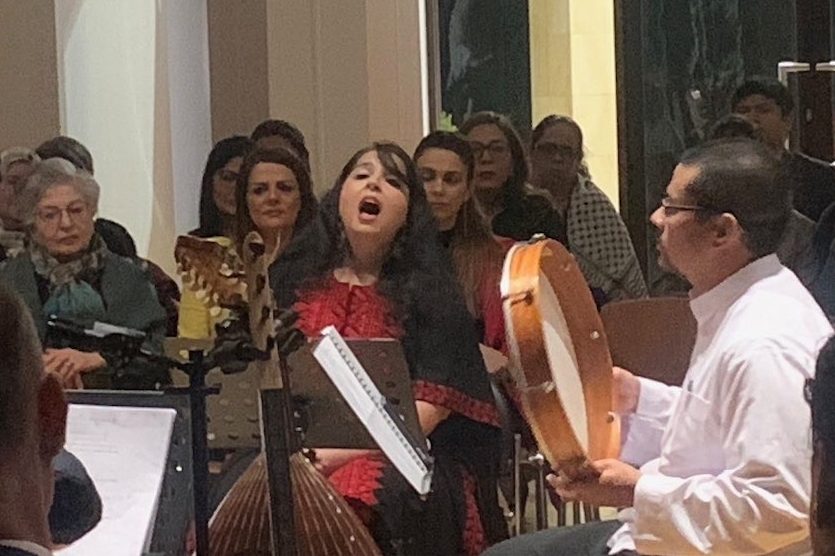Book review / “How Local Art Made Australia’s National Capital”, Anni Doyle Wawrzyńczak (ANU Press). Reviewed by MEREDITH HINCHLIFFE.
THIS must have been a difficult book to write. Anni Doyle Wawrzyńczak is embedded in the arts industry in Canberra and has been for many years – she must know where all the secrets are and would have had to skirt around them.
 While the book is a history of two contemporary art galleries/organisations – Bitumen River Gallery, established in 1981, and Canberra Contemporary Art Space in 1987, almost by definition it is set in the broader narrative of the development of arts and culture in Canberra from the 1920s to the 2000s.
While the book is a history of two contemporary art galleries/organisations – Bitumen River Gallery, established in 1981, and Canberra Contemporary Art Space in 1987, almost by definition it is set in the broader narrative of the development of arts and culture in Canberra from the 1920s to the 2000s.
BRG is named for its location in an unused shelter shed in the playground of a primary school and a church – an important example of adaptive reuse.
Readers need to be mindful that this is a constructed city – not just of important buildings – but also of its society.
In 1927, “The Canberra Times” wrote that “as a centre of culture, Canberra will be dependent on the establishment of the university. In the meantime, art societies may accomplish useful endeavour.”
From June that year, the Artists’ Society of Canberra was active. It went into recess during World War II and re-emerged in 1945.
The Canberra Photographic Society was founded in 1945 followed in 1948 by the Canberra Art Club.
The number of formal and informal groups and associations accelerated in the 1960s and 1970s. The Arts Council of Australia provided some access to travelling visual arts exhibitions.
In 1962, Riek Le Grand saw the need for a commercial gallery and established the first such exhibition space in her home. This was followed by Solander Gallery, established by Joy Warren in 1973, which celebrated its 40th birthday in 2013.
Wawrzyńczak begins the book with a detailed introduction, explaining that there are two parts to the history: the first traces the origins of what she claims to have been “… an exceptionally active and unique local arts community.”
The second part “tracks the development of contemporary visual arts practice from 1978 through to 2000 through the case study of Bitumen River Gallery which became Canberra Contemporary Art Space.”
There were several main players during this period, including the four co-ordinators/directors and, in particular, artists eX de Medici and the late Mandy Martin.
BRG was a collective, an artists-run space. It offered an exhibition space for the students and teachers, and then graduates, from the Canberra School of Art. Its exhibiting program has been described as “whacky and wonderful… sheltering some of the liveliest art in Canberra”.
During this time the Arts Council opened a well-appointed gallery in the newly refurbished Gorman House Arts Centre, with Ben Grady as director.
When he left to open his own, eponymously named gallery, the co-ordinator of BRG, Anne Virgo, was appointed director.
In April 1987 the Arts Council Gallery and BRG amalgamated to become the Canberra Contemporary Art Space. This was both the end and the beginning of two important periods in the life of the visual arts in Canberra. The second continues, now in front of Lake Burley Griffin. The rough and ready child grew into a mature entity.
In 1985 the ACT Arts Development Board commissioned a report from Timothy Pascoe into the funding of arts and cultural development in the ACT. Pascoe was previously executive chairman of the Australia Council and had lived in Canberra for about a year in the mid 1970s.
In her conclusion, Wawrzyńczak states: “The purpose of this history has been to ‘make a thorough analytical response to’… Timothy Pascoe’s misconception of the importance of visual arts development in Canberra.” He described the visual arts in Canberra in the mid-1980s as being “not particularly strong and as lacking the ‘opportunity for uniqueness’”.
The names of many well-known Australian artists appear in Wawrzyńczak’s history, reminding us that Canberra has always been a rich place for the visual arts, and she emphasises the importance of the now ANU School of Art and Design.
This book traces the differences brought about to the visual arts scene in Canberra and in the exhibition of contemporary art. It is an important, illuminating, and interesting history. Many of the people discussed are still working and exhibiting in Canberra and contributing in myriad ways to our rich cultural life.
Timothy Pascoe was quite wrong when he predicted a rather bleak future for the visual arts in Canberra.
Who can be trusted?
In a world of spin and confusion, there’s never been a more important time to support independent journalism in Canberra.
If you trust our work online and want to enforce the power of independent voices, I invite you to make a small contribution.
Every dollar of support is invested back into our journalism to help keep citynews.com.au strong and free.
Thank you,
Ian Meikle, editor




Leave a Reply